11 Types Of Orchids You Can Grow As Houseplants
So, you’re a fan of orchids, huh? You’re not alone – these exotic beauties are among the most popular and diverse groups of flowering plants out there.
With over 25,000 species and more than 100,000 hybrids, there’s an orchid for everyone’s taste.
But here’s the thing – not all of us have huge gardens or live in tropical climates where these stunners can thrive.
That’s why making them houseplants is an awesome idea.
Growing orchids as houseplants is a brilliant way to bring a touch of the tropics right into your living room.
They’re not only gorgeous to look at but also make excellent conversation starters.
So, if you’re ready to dive into the world of orchids, let’s get started on discovering 11 fantastic types that’ll rock your indoor space.
Factors to Consider When Choosing Orchids as Houseplants
These beauties are super popular houseplants, but there’s more to them than just their good looks.
If you wanna add some orchids to your indoor jungle, there are a few factors you need to consider to keep these babies happy and thriving.
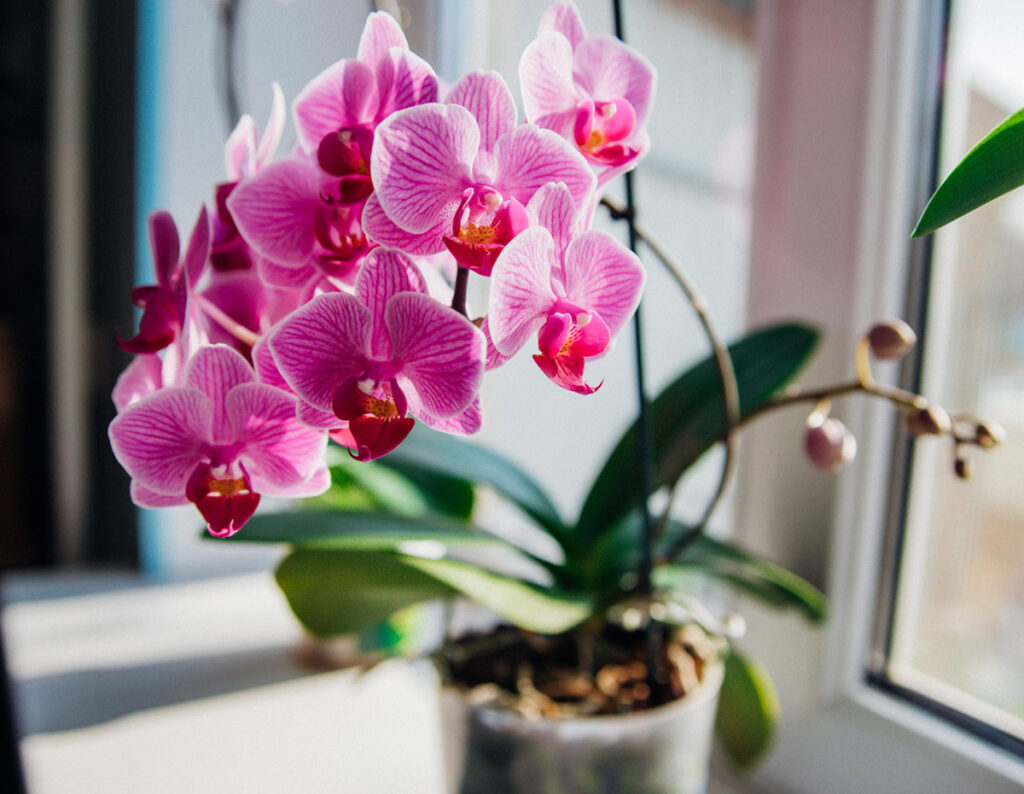
Light requirements
Orchids are like the Goldilocks of the plant world – they don’t want too much or too little light, but just the right amount.
Most orchids prefer bright, indirect light, which means you gotta find a sweet spot in your home where they won’t get scorched by direct sunlight, but also won’t be left in the dark.
A spot near an east or west-facing window is usually a good bet.
But hey, every home is different, so you might need to play around with different spots until your orchid gives you the green light (or leaves, rather).
Temperature and humidity preferences
Orchids are pretty chill when it comes to temperature, but they do have their preferences.
Most of ’em like it around 65-75°F during the day and a bit cooler at night, like 55-65°F.
And humidity? Yeah, they’re all about that.
They’re used to tropical environments, so they love a bit of moisture in the air.
To keep your orchid happy, you might wanna invest in a humidifier, or just place a tray of water near the plant.
Or, if you’re really into DIY, you can create a humidity tray with some pebbles and water.
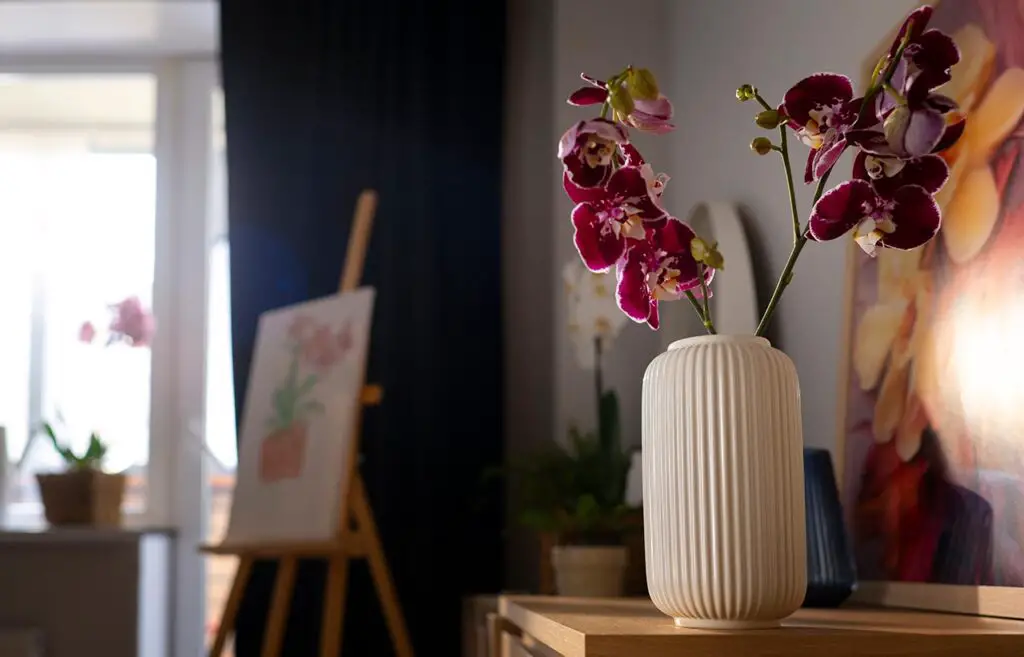
Watering and fertilization needs
Orchids ain’t your average houseplant, so you can’t just water ’em whenever you feel like it.
Nope, these babies have a schedule.
Most orchids need to be watered about once a week, but this can vary depending on the type of orchid and the environment it’s in.
Just make sure you don’t overwater – orchids hate soggy roots! As for fertilization, go easy on it.
A balanced, water-soluble orchid fertilizer every few weeks should do the trick.
Ease of care and maintenance
Some orchids are easier to care for than others.
If you’re new to the orchid game, you might wanna start with a beginner-friendly variety, like the Phalaenopsis (aka the moth orchid).
These guys are pretty low-maintenance and can tolerate a bit of neglect.
But hey, even the tougher orchids can be worth the effort, right? Just be prepared to give ’em some extra TLC.
Top 11 Types of Orchids for Growing as Houseplants
Some orchid varieties are better than others when it comes to growing orchids indoors.
These are our top recommendations if you wanna spruce up your home with some orchids.
Phalaenopsis Orchid (Phalaenopsis spp.)
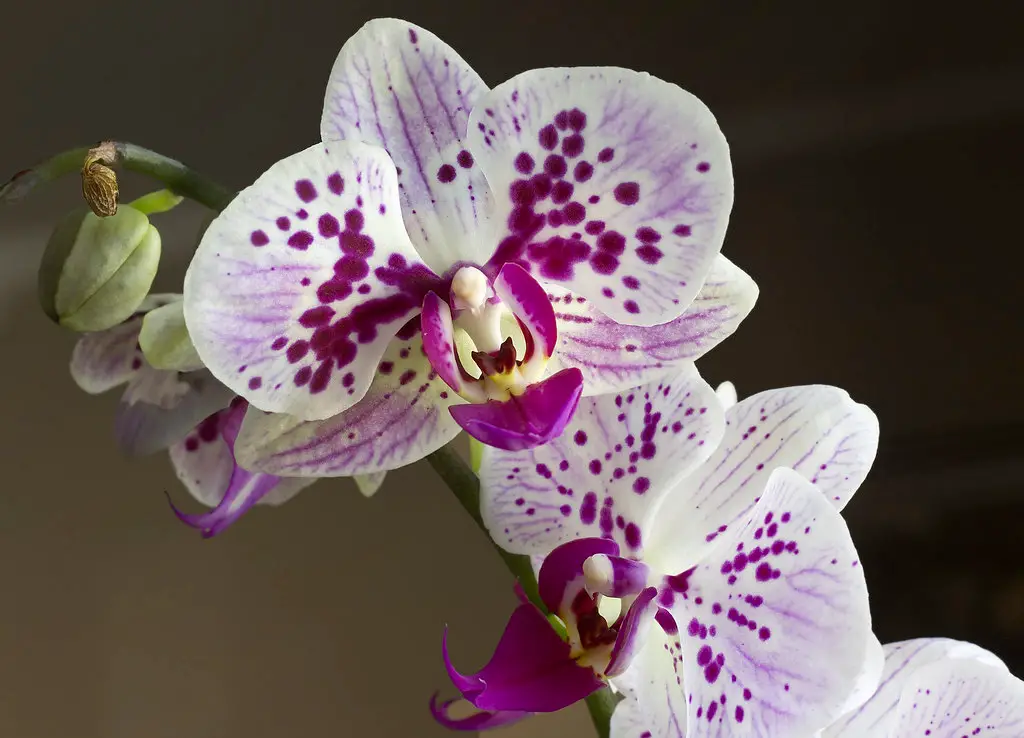
Hands down the most popular kid on the block, the Phalaenopsis Orchid, aka the “Moth Orchid,” is a popular option.
These babies are super easy to care for and come in a variety of colors to brighten up your space.
Just give ’em some indirect sunlight, and water once a week, and you’re good to go!
Plus, they can bloom for months, so you get a lot of bang for your buck.
The only downside? They can be a bit of a drama queen when it comes to temperature changes, so keep an eye on that.
Cattleya Orchid (Cattleya spp.)
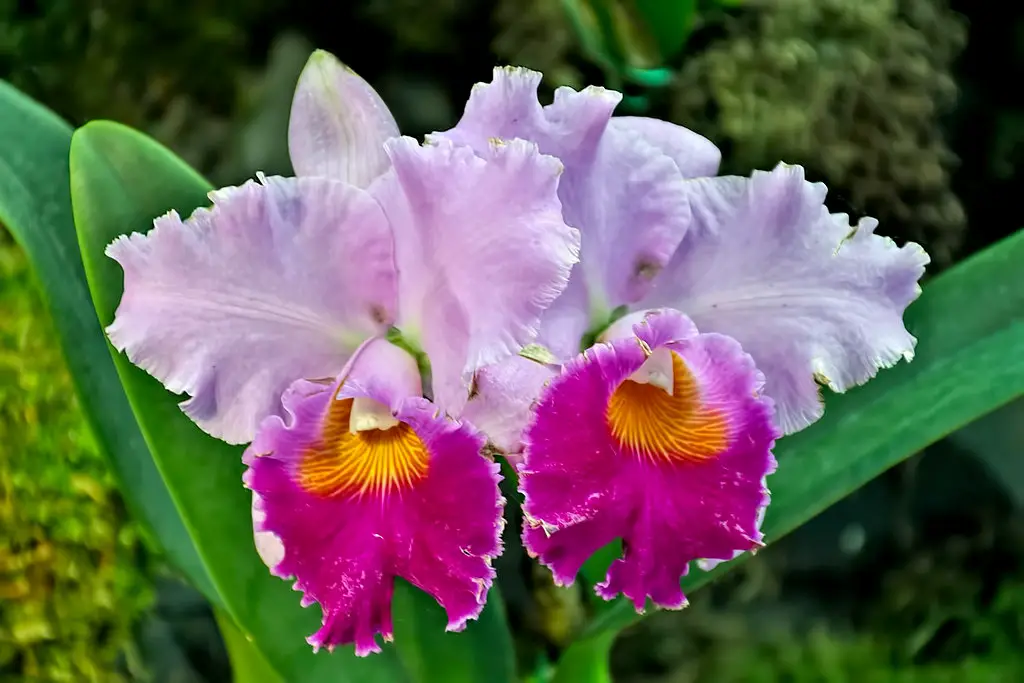
The Cattleya Orchid is known for its stunning, fragrant flowers.
These divas need a bit more sunlight than Phalaenopsis, but they’re still pretty low maintenance.
The catch? They can be a bit picky about their watering schedule, so make sure you let the potting mix dry out before giving them a drink.
But trust me, once you get a whiff of their perfume, you’ll be hooked!
Oncidium Orchid (Oncidium spp.)
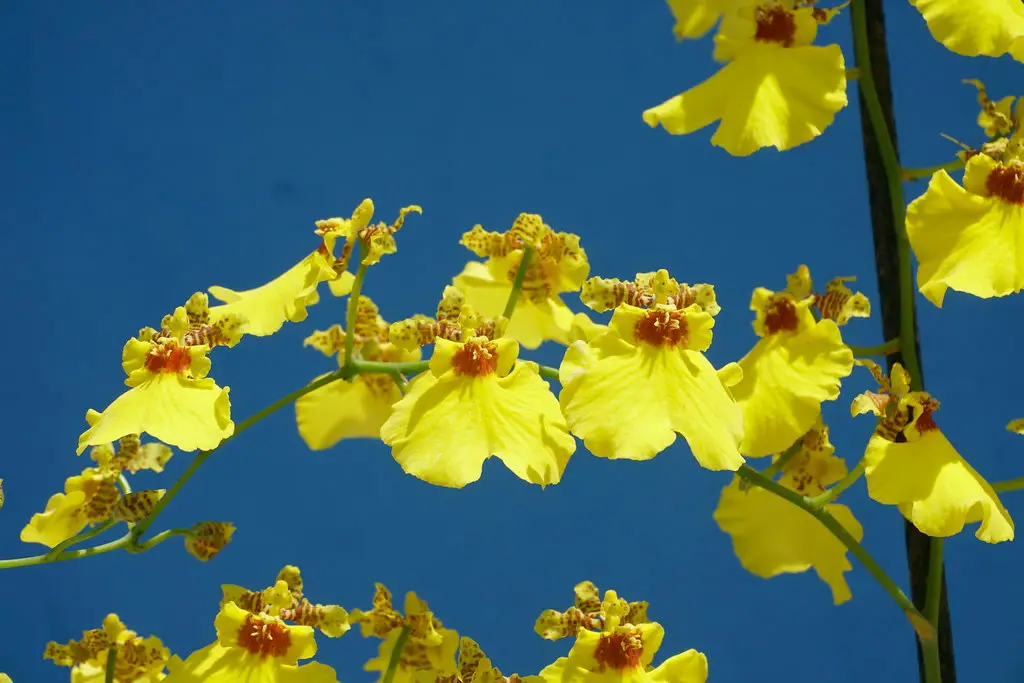
If you want a showstopper, look no further than the Oncidium Orchid, also known as the Dancing Lady orchid.
These guys have crazy cool flowers that look like they’re dancing in the breeze.
They love bright, indirect light and prefer to be kept on the drier side, so don’t go crazy with the watering can.
The only con? They can be a bit finicky with temperature, so make sure you’ve got a stable environment for them.
Dendrobium Orchid (Dendrobium spp.)
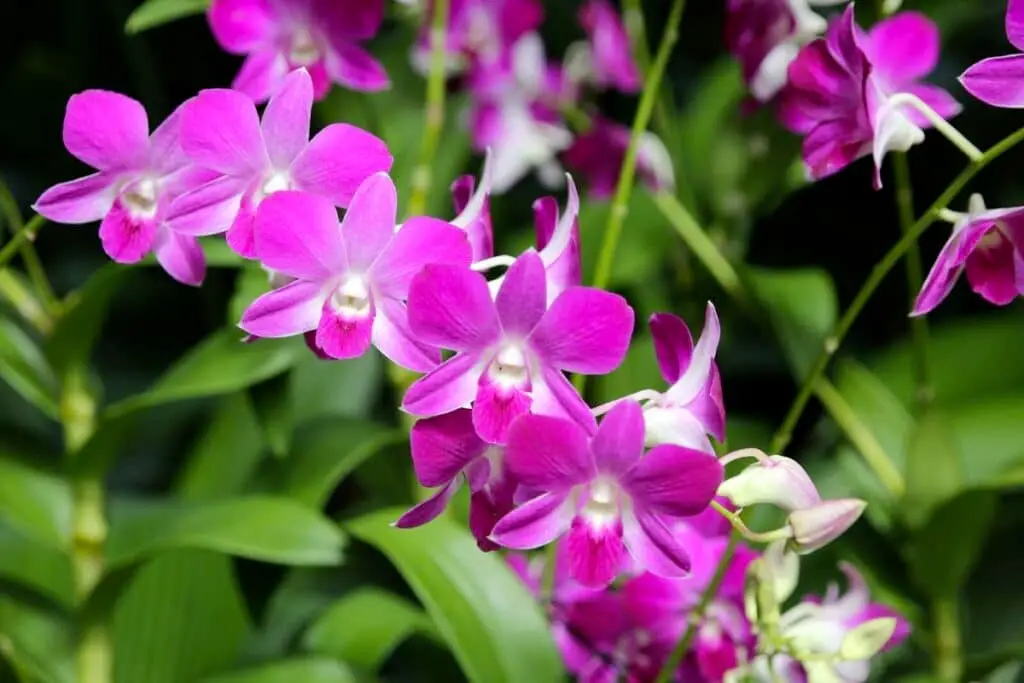
Dendrobium Orchids are a great choice if you’re looking for something a little more exotic.
They’ve got these rad, tall flower spikes that’ll make your space look super fancy.
They need a bit more light than some other orchids, and they like to stay moist (but not wet), so keep that in mind.
The downside? They can be a bit trickier to get to rebloom.
Paphiopedilum Orchid (Paphiopedilum spp.)
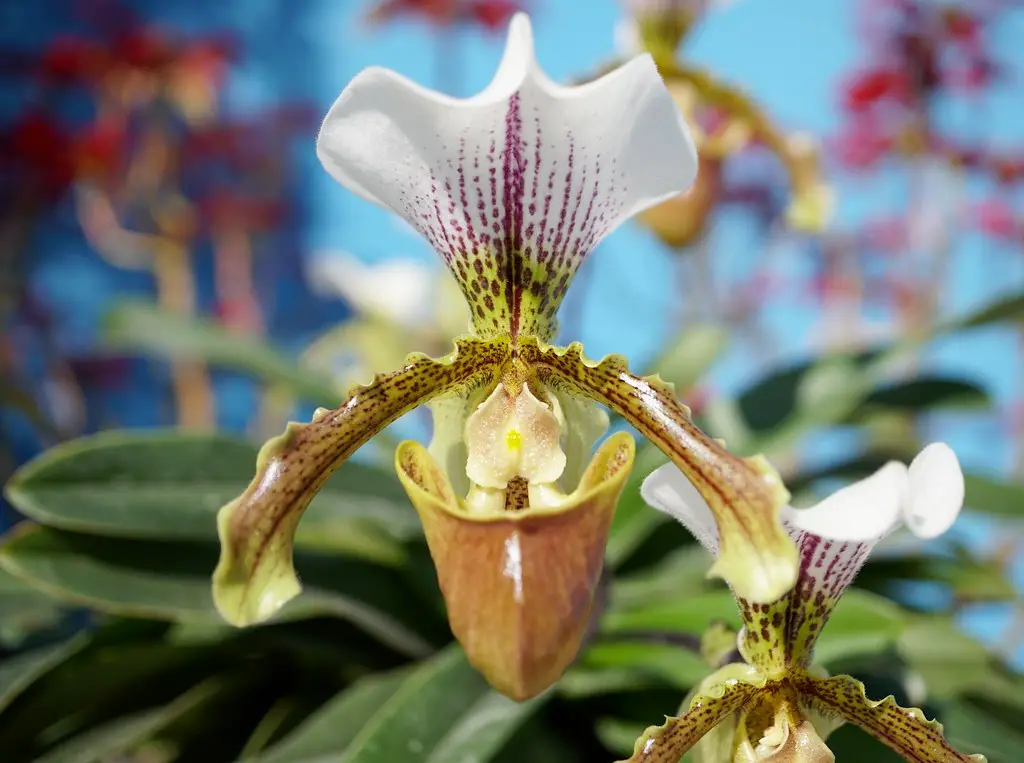
Also known as Venus Slipper or Lady Slipper orchids, these funky little plants have some seriously unique flowers that look like they’re wearing a pair of fancy slippers.
They do well in low light and like to stay evenly moist, so they’re pretty chill to care for.
The only bummer? Their blooms don’t last as long as some other orchids, but they’re so cool-looking that it’s totally worth it.
Cymbidium Orchid (Cymbidium spp.)
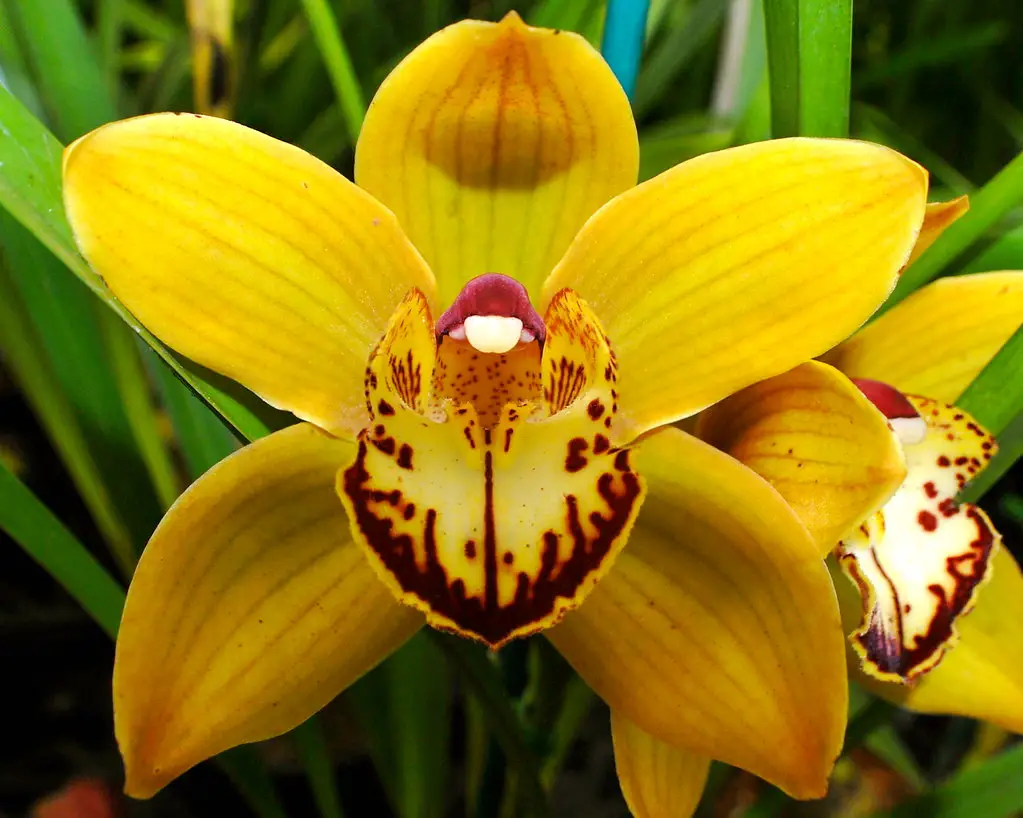
Cymbidium Orchids, also know as the Boat orchid, are a classic choice that’s perfect if you’ve got a cooler space because they actually prefer lower temperatures.
They’ve got these beautiful, arching flower spikes that’ll make your space look super elegant.
Just give ’em some bright, indirect light, and keep their potting mix evenly moist.
The only downside? They can be a bit bulky, so make sure you’ve got enough space for their big ol’ leaves.
Masdevallia Orchid (Masdevallia spp.)
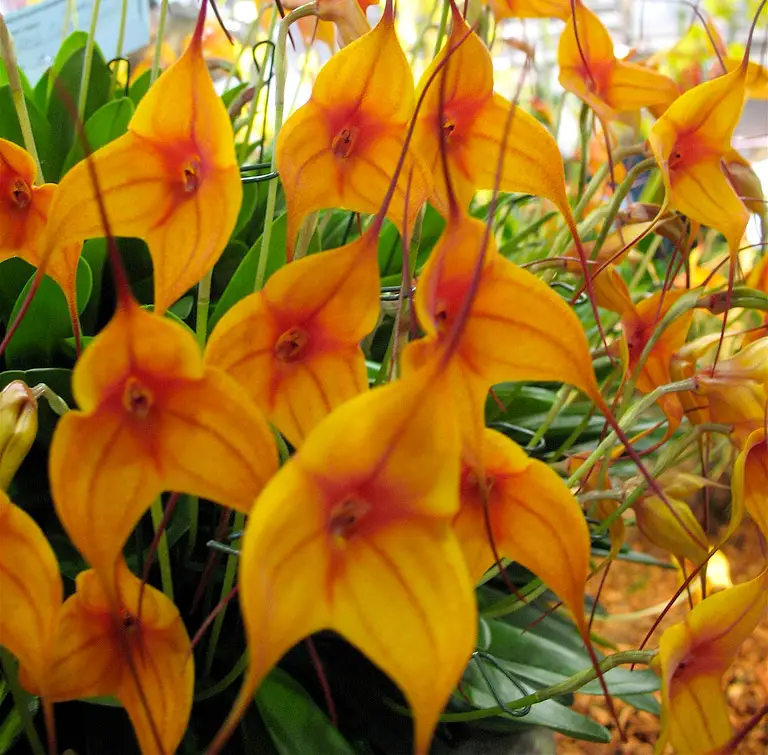
If you’re into funky, cool-looking plants, you’ll love Masdevallia Orchids.
They’ve got these awesome, triangular flowers that come in a bunch of different colors.
They do well in low light and cooler temperatures, so they’re perfect for a shady spot.
The catch? They like high humidity, so you might need to invest in a humidifier or mist them regularly to keep them happy.
Miltoniopsis Orchid (Miltoniopsis spp.)

Miltoniopsis Orchids, aka “Pansy Orchids,” are a great choice if you’re looking for something with a more delicate, romantic vibe.
They’ve got these sweet, pansy-like flowers that’ll make you swoon.
They prefer low light and cooler temperatures, so they’re perfect for a cozy nook.
Just be careful with watering, as they like to stay evenly moist but not soggy.
The only downside? They can be a bit finicky, so they might not be the best choice for a beginner.
Vanda Orchid (Vanda spp.)
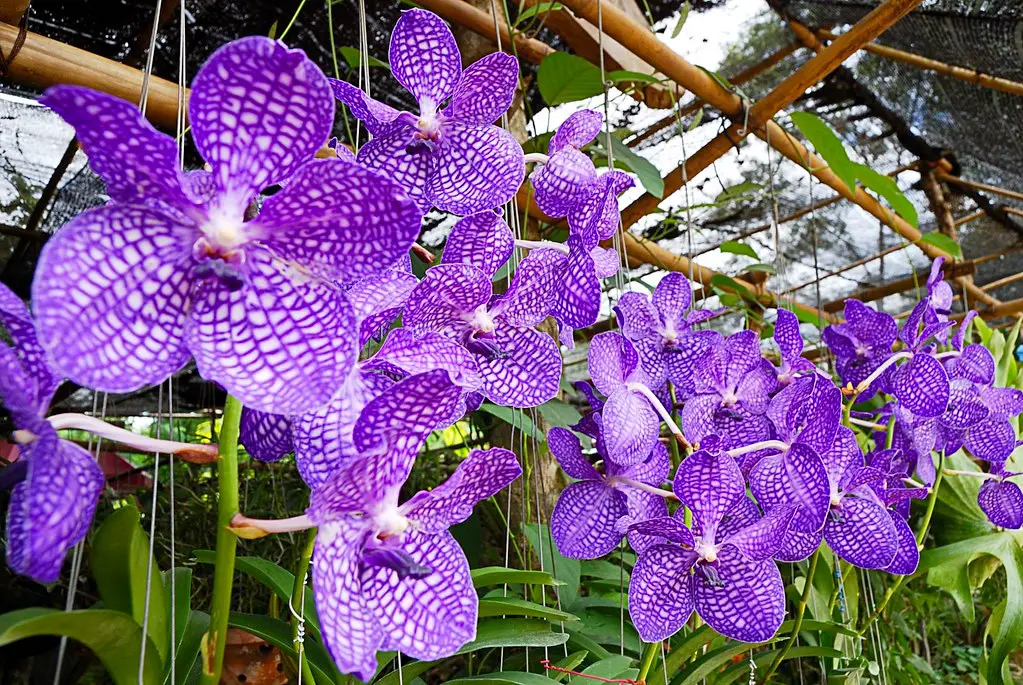
If you want to make a statement, go for a Vanda Orchid.
These bad boys have big, bold flowers that’ll have your guests talking.
They need bright light (even some direct sun) and prefer to be watered frequently.
But watch out, they’re not a fan of chilly temps, so keep them away from drafty windows.
The downside? They can be a bit more challenging to care for, but if you’re up for the challenge, they’re totally worth it.
Brassia Orchid (Brassia spp.)
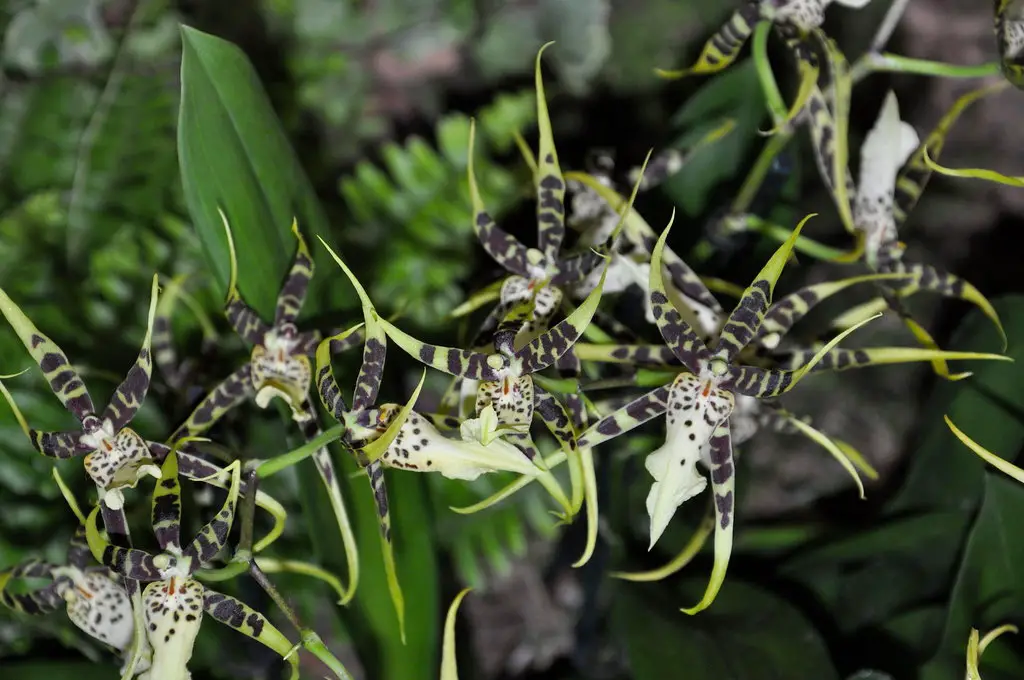
Looking for something a little wild? Check out Brassia Orchids, aka “Spider Orchids.”
These funky plants have long, spidery flowers that’ll add some pizzazz to your space.
They like bright, indirect light and moderate temps, so they’re not too fussy.
The only con? They can be a bit sensitive to overwatering, so keep an eye on that potting mix.
Ludisia Orchid (Ludisia discolor)
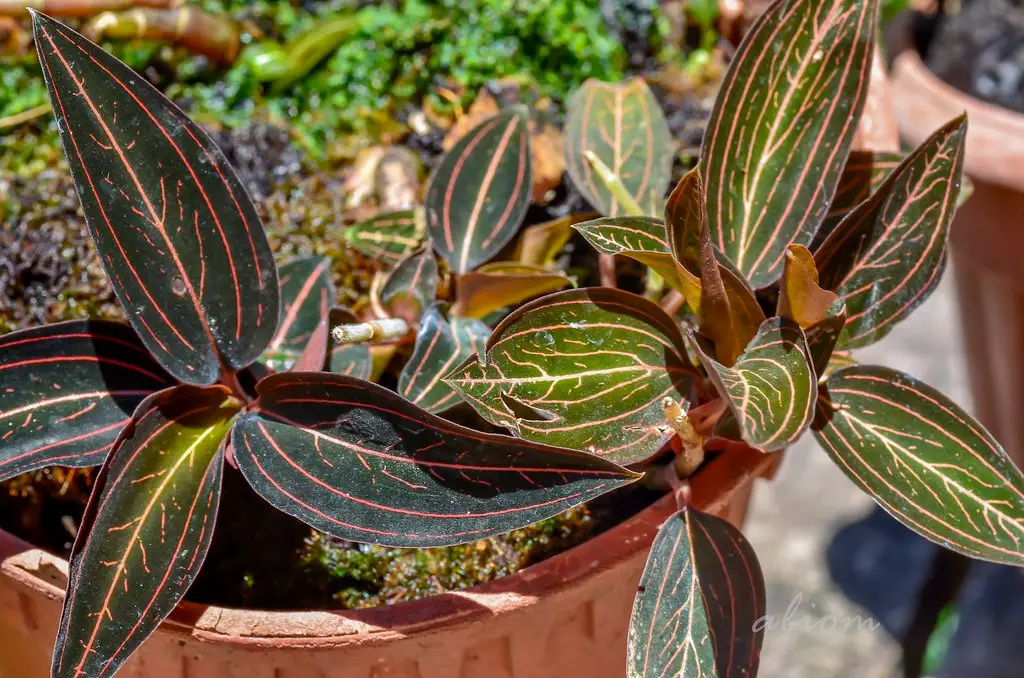
And don’t miss out on the Ludisia Orchid, aka the “Jewel Orchid.”
These unique plants are actually grown more for their gorgeous, velvety leaves than their flowers.
They do well in low light and like to stay evenly moist, so they’re perfect for a low-maintenance gardener.
The only downside? Their blooms aren’t as showy as some other orchids, but their stunning foliage more than makes up for it.
Tips for Successfully Growing Orchids as Houseplants
We all wanna grow some seriously stunning orchids as houseplants.
And with these tips, you’ll be flexing your orchid-growing skills in no time.
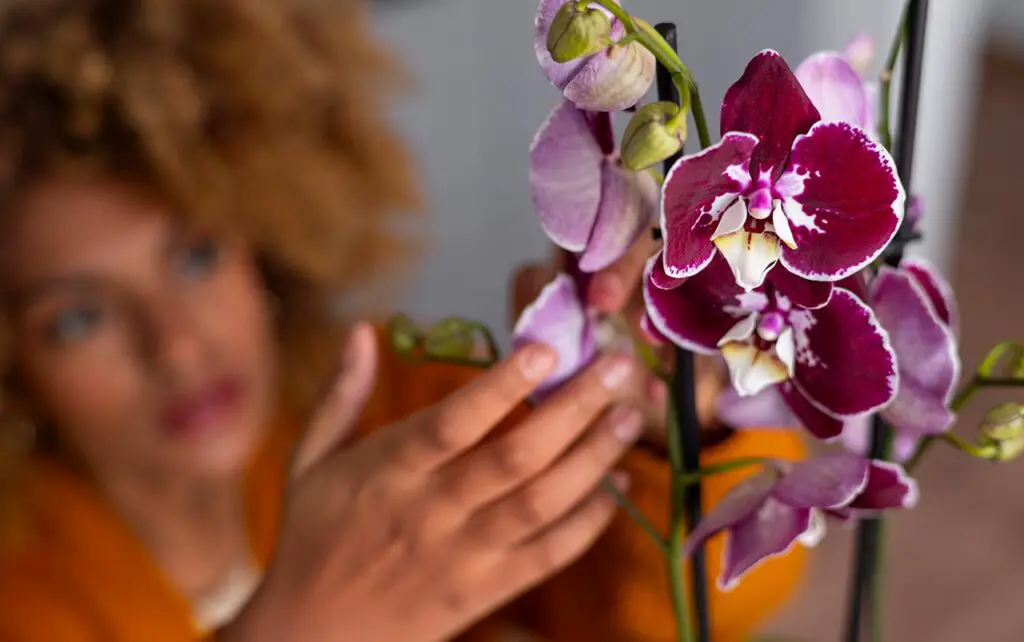
Choosing the right potting mix
Orchids need a special potting soil mix that allows for excellent drainage and airflow.
You’ll wanna look for a mix made of chunky bits like bark, coconut husk, perlite, or even some sphagnum moss.
And hey, if you’re feeling extra fancy, you can even whip up your own custom blend!
Providing adequate light and temperature conditions
Orchids ain’t your average houseplant – they’re kinda like Goldilocks when it comes to their environment.
You know, not too hot, not too cold, but juuuust right.
So, how do you hit that sweet spot? Place your orchid near a window with bright, indirect light.
Too much direct sun can scorch those lovely leaves, and nobody wants that.
As for temperature, aim for daytime temps around 70-80°F and nighttime temps around 60-65°F.
A little fluctuation is totally cool, just don’t go too extreme on ’em.
Proper watering and fertilization techniques
Orchids can be a tad finicky when it comes to water, so listen up.
You’ll wanna let the potting mix dry out a bit between waterings.
When it’s time for a drink, give your orchid a good soak, making sure the water drains out completely.
And remember, nobody likes wet feet – especially not your orchid!
As for food, grab a balanced orchid fertilizer and follow the package directions.
Generally, you’ll be feeding your orchid every couple of weeks, but be sure to adjust based on your specific plant’s needs.
Recognizing and managing common orchid pests and diseases
Keep an eye out for common issues like scale, mealybugs, and spider mites.
If you spot any troublemakers, break out the insecticidal soap or neem oil and show ’em who’s boss!
And if you’re dealing with any funky fungal or bacterial issues, don’t be afraid to bust out some cinnamon or hydrogen peroxide to keep your orchid healthy and happy.
Encouraging Orchids to Rebloom
Got some orchids and wondering how to get this beaut to rebloom?
Well, you’re in the right place.
Orchids can be a little picky when it comes to light, temperature, and humidity.
So, what can you do to keep your orchid happy and blooming?
- Light it up: Orchids love bright, indirect light. A spot near a window with a sheer curtain works great. Too much direct sunlight can burn their leaves, so keep an eye on how much sun your orchid is getting. If the leaves are a deep green, it might need a bit more light to thrive.
- Temperature talk: These plants enjoy a temperature range of around 60-75°F during the day and a bit cooler at night. So if your home’s temps are within that range, you’re golden! Just make sure not to place them near drafts or heating/cooling vents.
- Humidity, baby: Orchids love high humidity, so aim for 40-60%. You can use a humidity tray or mist your orchid daily to keep it happy. A small humidifier near your plant can also do the trick.
- Fertilize like a pro: Feed your orchid with a balanced, water-soluble fertilizer every couple of weeks. Make sure to follow the package instructions, ’cause too much can do more harm than good.
- Repotting 101: Orchids generally need repotting every 1-2 years. Choose a well-draining mix designed for orchids, and don’t forget to give that root system a little trim to remove any dead stuff. Your plant will thank you!
- Prune like a boss: After your orchid has finished blooming, you’ll want to trim the flower stem. Cut it above the second node (the little bumps on the stem) to encourage new growth. Keep an eye out for any yellowing or dead leaves and remove them to keep your plant healthy.
- Maintenance matters: Keep your orchid’s leaves clean by wiping them with a damp cloth. This helps the plant breathe and absorb light more efficiently. Plus, it keeps pests at bay!
With a little TLC, your orchid will be blooming like a champ in no time.
Remember, patience is key – these plants can take a while to rebloom, but it’s totally worth the wait.
Displaying Orchids in Your Home
I’ve got some creative ideas for ya to show off your prized orchid collection and make your home look like a botanical paradise.
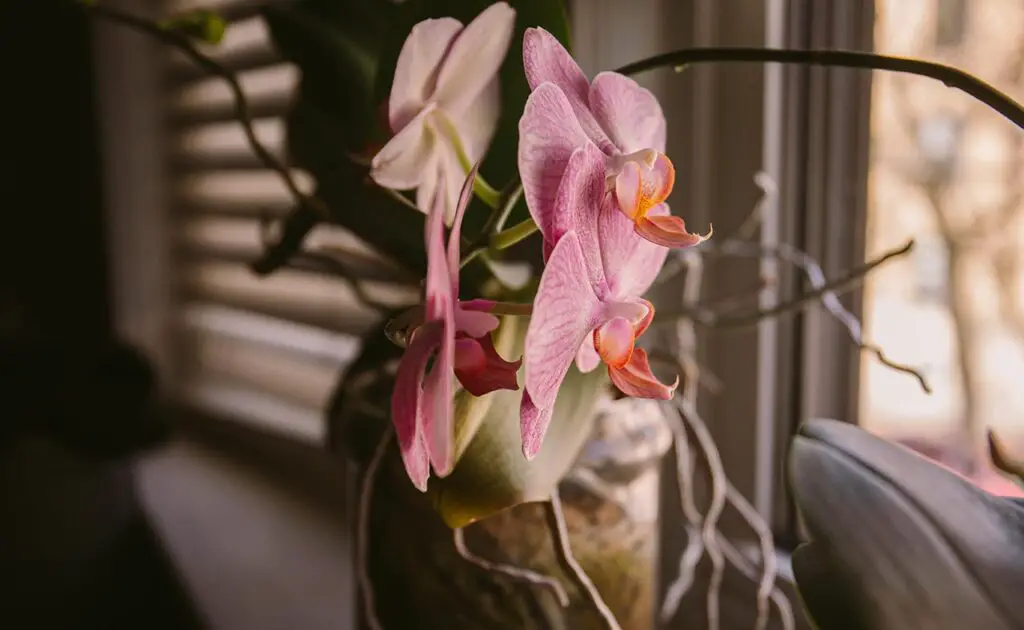
Creative ideas for showcasing your orchid collection
Who says you can only display orchids?
Get a little wild and combine them with other houseplants for a lush and visually interesting setup.
You can group your orchids with some ferns, pothos, or even some snake plants to create a mini indoor jungle.
The different textures and colors of the leaves will make your orchid display really pop.
Plus, having a variety of plants in the mix can help improve air quality in your home.
Combining orchids with other houseplants for visual interest
What about using orchids as living decor in various rooms of your home?
Orchids aren’t just for your living room, folks.
Think outside the box and add some orchid flair to other spaces in your home.
How about placing a lovely orchid on your nightstand to add a touch of elegance to your bedroom?
Or maybe you’ve got an empty windowsill in your bathroom just begging for a beautiful orchid to brighten up the space.
Trust me, there’s no better way to make a room feel more luxurious and spa-like than with an exotic orchid.
Using orchids as living decor in various rooms of your home
You know what’s even cooler? You can get all artsy with your orchid display by using unconventional containers or hanging methods.
Forget those boring old pots – try displaying your orchids in unique containers like vintage teacups, mason jars, or even some cool-looking shoes (seriously, I’ve seen it done!).
If you’re feeling extra crafty, you can create a hanging orchid display using macrame plant hangers or even some repurposed picture frames.
Your friends will be super impressed, and your orchids will be the talk of the town!
Oh, and speaking of showing off your orchid collection, why not make it a focal point in your home?
You can create a stunning orchid wall by installing some floating shelves or using a ladder-style plant stand.
Arrange your orchids in a visually appealing way, and maybe even add some fairy lights for that extra touch of magic.
It’ll become the centerpiece of your room, and you’ll feel like you’re living in a tropical oasis (minus the humidity and bugs, of course!).
